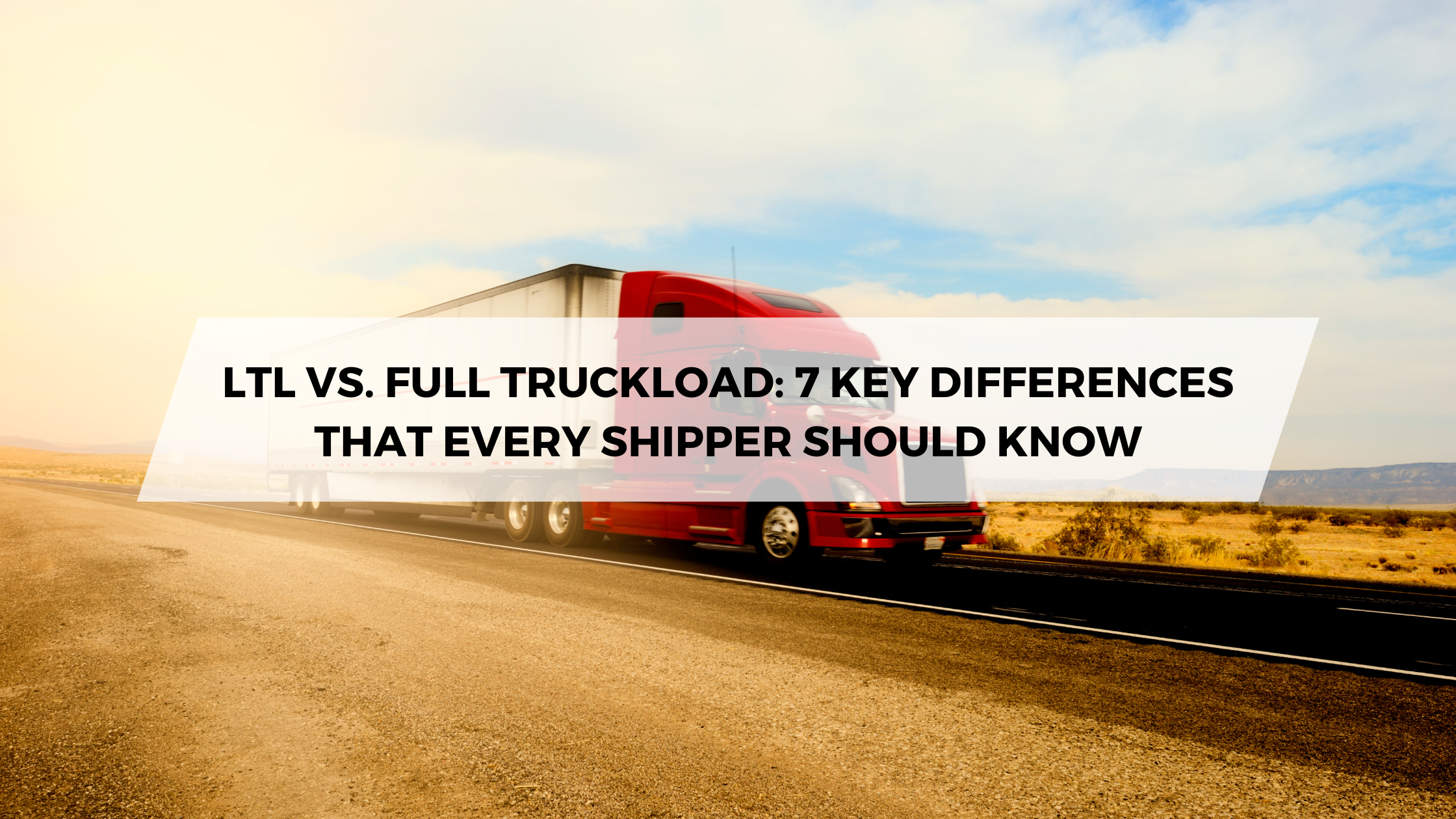LTL vs. Full Truckload: 7 Key Differences that Every Shipper Should Know
As a shipper, it’s important to understand the difference between LTL (Less than Truckload) and FTL (Full Truckload) shipping.
7 Key Differences that Every Shipper Should Know
Here are 7 key differences that every shipper should know:
1. LTL shipping is best for smaller shipments that weigh less than 10,000 lbs. FTL shipping is best for larger shipments that weigh more than 10,000 lbs.
2. LTL shipments are typically palletized and loaded onto a trailer with other shipments. FTL shipments are typically not palletized and are loaded onto a trailer by themselves.
3. LTL shipments typically take longer to ship because they are consolidated with other shipments. FTL shipments typically take less time to ship because they are not consolidated with other shipments.
4. LTL rates are typically calculated by the shipment’s weight and class. FTL rates are typically calculated by the shipment’s weight, miles, and fuel surcharge.
5. LTL shipments typically require multiple stops for loading and unloading. FTL shipments typically only require one-stop for loading and unloading.
6. LTL shipments are typically handled by multiple people throughout the shipping process. FTL shipments are typically handled by fewer people throughout the shipping process.
7. LTL shipments typically have more restrictions than FTL shipments. For example, LTL shipments typically cannot exceed 10,000 lbs. or 12 feet in length.
What is the Difference between LTL And FTL?
LTL (Less Than Truckload) shipping is a transportation method for shipments that are too large for parcel shipping, but too small to fill an entire truck. LTL shipments are typically palletized and can weigh anywhere from 100 to 10,000 pounds. The main difference between LTL and FTL (Full Truckload) shipping is that LTL shipments are consolidated with other shipments going to the same destination, while FTL shipments have the entire truck to themselves.
This difference in transportation methods can affect shipping costs, transit time, and shipping options. LTL shipping is typically cheaper than FTL shipping because the shipper is only paying for the space their shipment occupies on the truck. FTL shipping is more expensive because the shipper is paying for the entire truck, even if their shipment only takes up a small portion of it.
Transit times for LTL shipments can vary depending on how many stops the truck makes and whether or not the shipment is going to a terminal. FTL shipments typically have shorter transit times because the truck doesn’t have to make any stops along the way. Shipping options are also different for LTL and FTL shipments.
LTL shipments can be shipped using either standard or expedited shipping methods. Standard shipping methods typically take longer, but are cheaper. Expedited shipping methods are more expensive, but can get your shipment to its destination faster.
FTL shipments can only be shipped using standard shipping methods. When deciding which shipping method to use for your shipment, you will need to consider the cost, transit time, and shipping options. If you need your shipment to arrive quickly and cost is not a concern, FTL shipping is the best option.
If you are looking for a cheaper shipping option with a longer transit time, LTL shipping is the way to go.
Finally, you need to consider the value of your shipment. This is important because it will determine the insurance that is needed to protect your shipment. By considering these key metrics, you can ensure that your LTL shipment is shipped safely and efficiently.
What are Some of the Key Metrics for LTL Shipments?
There are a few key metrics that are important to consider when shipping LTL (Less than Truckload) shipments.
These metrics can help you determine the best way to ship your products, and can also help you troubleshoot any issues that may arise during shipping. First, you need to consider the weight of your shipment.
This is important because it will determine the shipping cost, as well as the size of the truck that is needed to transport the shipment. Next, you need to consider the dimensions of your shipment. This is important because it will determine the amount of space that is needed on the truck, as well as the packaging that is needed to protect your shipment.
Conclusion
If you’re a shipper, you probably know that there are two main ways to ship your freight: Less than Truckload (LTL) and Full Truckload (FTL). But what are the key differences between these two shipping methods? Here are the best shipping services provided by Eternity logistics with focus on key elements of FTL and LTL with their amazing offers and safe, reliable delivery.
Facebook Page

